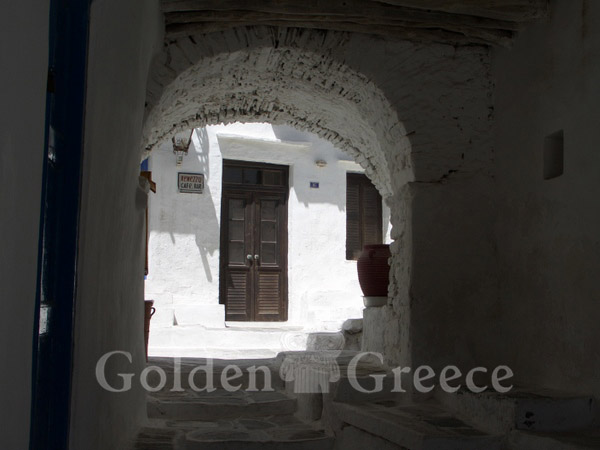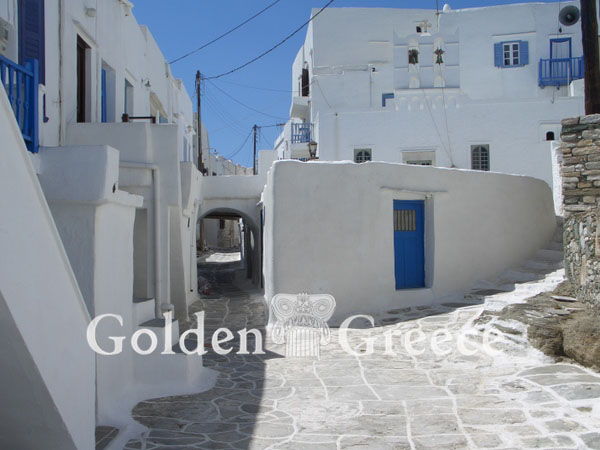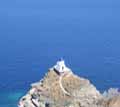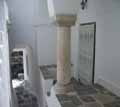
The toponym Kastro means fortress. In its current form, the settlement is an example of a castle from the Venetian period. It is built on an ancient city, the "asty" as mentioned by Herodotus. It has been inhabited since ancient times and is an open museum. The first row of consecutive two- or three-story houses forms the outer medieval wall. This is where the common class resided, while in the inner row located at the highest part of the castle, the aristocratic class resided, to have more security from pirate raids and looting. The visitor still enters the Castle today through the old entrances-stoes (loggias), which were once secured and protected by battle towers. Due to the narrowness of the space in the buildings, horizontal ownership is observed. The Castle was the capital of Sifnos in ancient times, the medieval and modern period until 1836, as well as seat of the Archdiocese of Sifnos and the Diocese of Sifnomilos. The metropolitan residence was at the top of the acropolis, today's "despotic". The metropolitan church of the Catholics, today Fragantonis, was also located nearby here. At the entrance of the village, where today the Castle cemetery and the churches of Agios Stefanos and Agios Ioannis are located, the famous School of the Holy Sepulcher (1687-1835), known as the "Paedeutirion of the Archipelagos", operated. The visitor can take a walk on the pedestrian street, admire the picturesque Eftamartyros church and visit the archaeological museum. In the southern roots of the Castle, lies Gialos or Seralia the ancient port of Sifnos, which means palace, perhaps one of the majestic buildings that existed during the Turkish occupation in the valley of Gialos.
Editor: Fotini Anastasopoulou








































